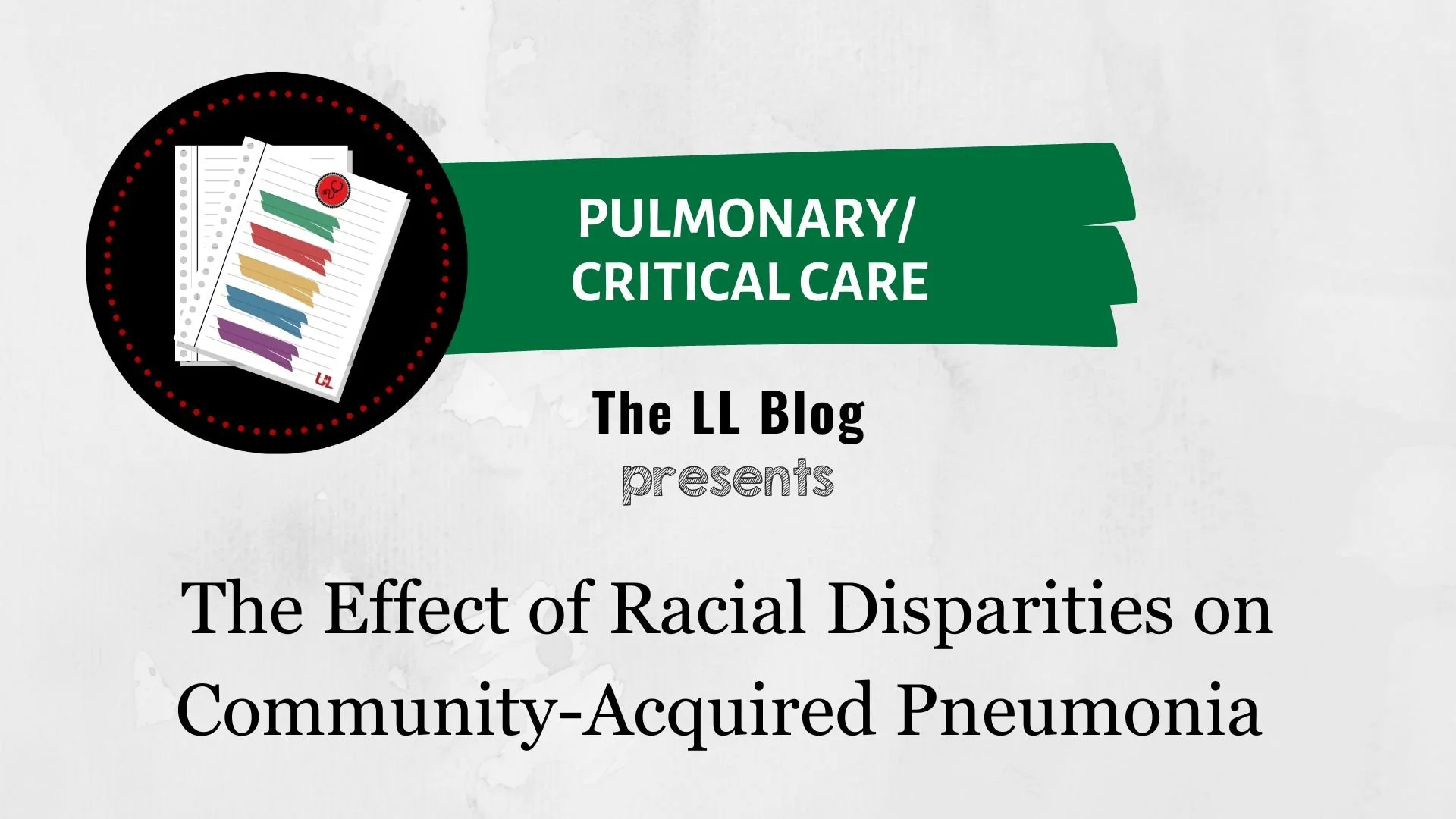Pulmonary and Critical Care Blog Posts
The Effect of Racial Disparities on Community-Acquired Pneumonia
Dr. James Bradley
Pneumonia is one of the most common reasons for hospitalization and ICU admission in the world, and disease burden increases with age.¹,² It is well recognized that racial, ethnic, and socioeconomic disparities have a significant impact on various clinical endpoints in patients with pneumonia, such as mortality, length of stay, and ICU admission. Although significant progress has been achieved over the past several decades in narrowing the gaps in outcomes, health disparities still exist and they have only been further highlighted by the recent COVID-19 pandemic.³,⁴ Click to read!
Long COVID
Dr. Matt Taylor
Long COVID is a constellation of symptoms due to the involvement of various body symptoms in COVID patients after the acute phase. This develops after COVID pneumonia and continues for greater than 12 weeks. Similar symptoms have been seen with Severe Acute Respiratory Syndrome (SARS), Middle East Respiratory Syndrome (MERS), and Influenza (H1N1 and H7N9). Symptoms can occur in hospitalized and non-hospitalized patients. Click to read!
How To: Oxygen Devices
Dr. Martha Gallegos
When considering oxygen delivery devices, it is essential to consider the needs of the patient and any contraindications to those modalities. While there are many styles of oxygen delivery modalities, they function differently. For example, some oxygen modalities can provide low flow oxygen amounts due to their dependence on patients on minute ventilation, such as the nasal cannula and the simple face mask. Other oxygen modalities provide fixed amounts of oxygen regardless of the patient’s minute ventilation, thus making them easily titratable. These are the Venturi face mask and the high flow nasal cannula. This blog will walk you through the various oxygen modalities available to provide supplemental oxygen for the patients. Click to read!
Continuing to Survive Sepsis and Some Changes
Dr. Will Linville
Walk into any ICU on any given day and there will be a patient who is suffering from sepsis. Arguably, the most common diagnosis that the ICU physician encounters and a diagnosis that requires rapid recognition and treatment. ICU physicians have been trained to follow surviving sepsis guidelines which have gone through updates over the years since their first launch in 2002. We now have the 2021 updates, and I would like to go over some of those most important updates with you. Hopefully this will be informative and save you from having to read a 60 page document. Click to read!
BARIATRIC MEDICINE IN THE ICU PART 1: NUTRITION
Dr. James Bradley
There is currently a worldwide pandemic (besides COVID!) that deserves an equal amount of attention. Obesity has been increasing in prevalence throughout the world for several decades and the care of these patients is becoming increasingly complex. In 2005, it was estimated that obesity costs the US $147-210 billion per year and this likely has only increased.¹ Click to read!
HOW WOULD YOU/COULD YOU TREAT AN ACUTE PE?
Dr. Sruti Brahmandam & Dr. Sravya Brahmandam
A 72-year-old female with history of OSA, recent tibula & fibular fracture s/p ORIF presents to the hospital with shortness of breath and was found to have bilateral submassive pulmonary embolisms and underwent EKOS thrombolysis and was discharged with Eliquis.
She returns to the hospital within 24 hours after a slip from bed with a left ankle dislocation. In the OR she had a cardiac arrest with return of spontaneous circulation. In the ICU, she was given systemic alteplase for worsening right heart strain and started on a heparin drip. As a result, obstructive shock greatly improved. Transthoracic echocardiogram demonstrated mod-severe global right ventricular hypokinesis and flattened septum with EF of 40%. She was eventually extubated and was discharged home. Click to read!
HRS: OUT WITH THE OLD & IN WITH THE NEW
Dr. Sruti Brahmandam & Dr. Sravya Brahmandam
We all know decompensated cirrhotic patients can be critically ill, with a myriad of associated syndromes. Despite this, only on two occasions were syndromes defined by a consensus. In 1978, a conference organized in Sassari, Italy was convened to define and propose diagnostic criteria for hepatorenal syndrome (HRS). After another decade, the 13th International Conference of Gastroenterology in Rome, Italy called for modification of the original criteria. Click to read!
IS YOUR RESUSCITATION FLUID HARMING YOUR PATIENTS?
Dr. Juan M. Galvis
For decades, physicians have discussed which crystalloid fluid is the best fluid for resuscitation and for many years patients were resuscitated with normal saline. This brief article will discuss which crystalloid is the most appropriate for resuscitation based on the most recent evidence. Click to read!
Some items in this lecture may have come from the lecturer’s personal academic files or have been cited in-line or at the end of the lecture. For more information, see our citation page.
Disclaimers
©2015 LouisvilleLectures.org










